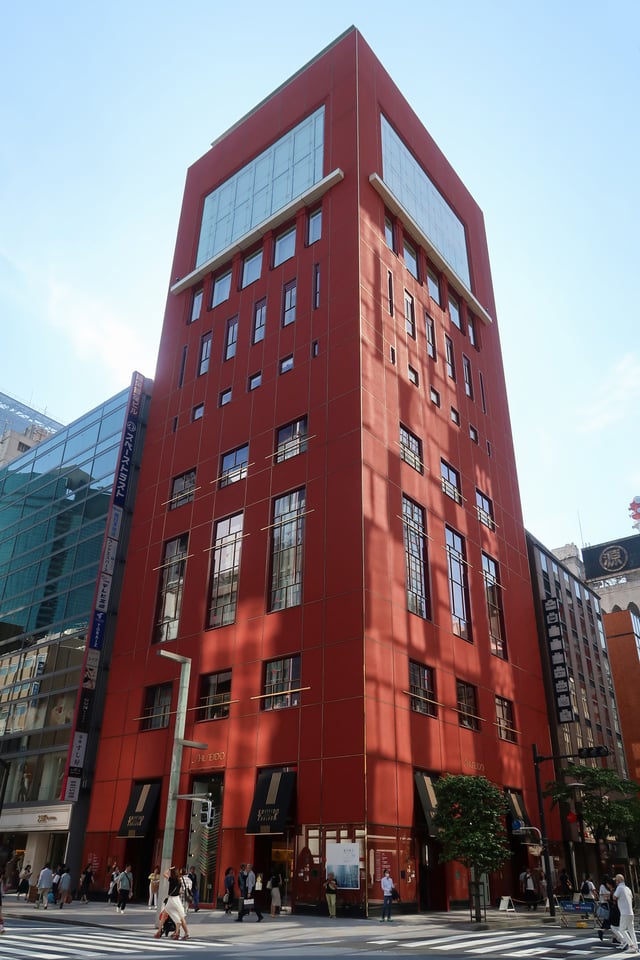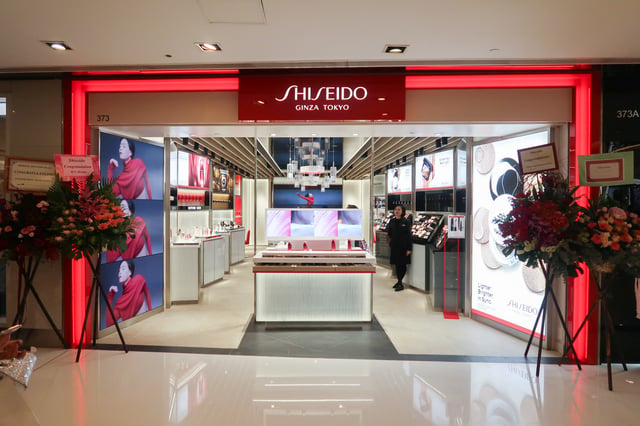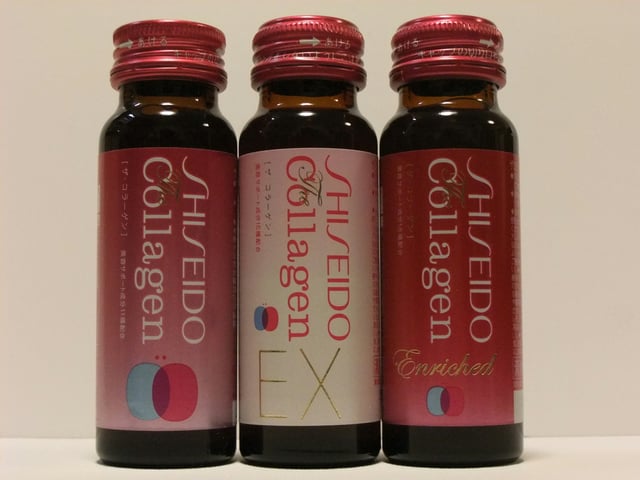Shiseido

Shiseido

Native name | 株式会社資生堂 |
|---|---|
Romanized name | Kabushiki-gaisha Shiseidō |
Type | Public (K.K.) |
| Traded as | TYO: 4911 [29] |
| ISIN | JP3351600006 [30] |
| Industry | Consumer goods |
| Founded | 1872 (1872) |
| Headquarters | Chūō, Tokyo , |
Area served | Worldwide |
Key people | Masahiko Uotani(President and CEO)[1] |
| Products | Cosmetics |
| Revenue | |
Net income | |
Number of employees | 33,356 (2013) |
| Subsidiaries | Bare Escentuals Beaute Prestige International NARS Cosmetics |
| Website | shiseidogroup.com [31] |
Shiseido Company, Limited (Japanese: 株式会社資生堂, Hepburn: Kabushiki-gaisha Shiseidō, pronounced [ɕiseːꜜdoː]) is a Japanese multinational personal care company, that is a skin care, hair care, cosmetics and fragrance producer. It is one of the oldest cosmetics companies in the world. Founded in 1872, it celebrated its 140th anniversary in 2012.[3][4] It is the largest cosmetic firm in Japan and the fifth largest cosmetics company in the world.[5] Shiseido is only available at cosmetic counters at selected department stores or pharmacists. The company owns numerous brands and subsidiaries worldwide, in addition to its founding label. The company is headquartered in Tokyo, and trades on the Tokyo stock exchange, it is a chief competitor of SK-II.
Native name | 株式会社資生堂 |
|---|---|
Romanized name | Kabushiki-gaisha Shiseidō |
Type | Public (K.K.) |
| Traded as | TYO: 4911 [29] |
| ISIN | JP3351600006 [30] |
| Industry | Consumer goods |
| Founded | 1872 (1872) |
| Headquarters | Chūō, Tokyo , |
Area served | Worldwide |
Key people | Masahiko Uotani(President and CEO)[1] |
| Products | Cosmetics |
| Revenue | |
Net income | |
Number of employees | 33,356 (2013) |
| Subsidiaries | Bare Escentuals Beaute Prestige International NARS Cosmetics |
| Website | shiseidogroup.com [31] |
Company History
Founding
Arinobu Fukuhara, former head pharmacist to the Imperial Japanese Navy, established the Shiseido Pharmacy in 1872. After a visit to the United States and Europe, Arinobu added a soda fountain to the store. This later grew into the Shiseido Parlour restaurant business, and eventually led to the introduction of ice cream in Japan. The name Shiseido derives from a Chinese expression meaning "praise the virtues of the earth which nurtures new life and brings forth significant values".[6][7][8]
In 1917, Shiseido introduced Rainbow Face Powder. This was a face powder with seven colors in a period when white face powders were the norm in Japan.[9] In 1923, the company began expanding its store-base; it now has approximately 25,000 outlets. A joint-stock company was formed in 1927.
In April 2014, Masahiko Uotani started working as the first CEO of the company.[10]
International expansion
In 1985, Shiseido was the first company to produce sodium hyaluronate (hyaluronic acid/hyaluronan) from non-animal origin sources.[12]
Finances and operations
In the first quarter of 2013, Shiseido made a profit of ¥2.66 billion (US$26.87 million) on sales of ¥162.36bn (US$1.64bn).[13] On 15 July 2013, Shiseido announced it was opening a wholly owned subsidiary in India.[14] On 20 February 2014, Shiseido agreed to sell its Carita and Decléor brands to L’Oréal for €227.5M (US$312.93M). This sale resulted in Shiseido showing profits despite running into losses.[15]
Acquisitions
Make-up
Shiseido produces a line of cosmetics simply called "The Makeup" that provide a full range of products including: lip products, powder eye shadows, eye liner pencils, mascara, fluid and compact foundations, concealers, and powder blushes. Their hydro powder eye shadows which have a creamy texture are among Allure magazine's top beauty picks.[20]
Shiseido stepped into the world of cosmetics with the introduction of Eudermine in 1897, and established the Cosmetics Division and a store selling cosmetics in 1916. With the birth of new cosmetics, the definition of makeup started to alter in the 1920s. The cosmetics were not used exclusively by women. Men started to use makeup to rebuild their image. Meanwhile, modern beauty methods became a popular beauty topic in advertisements, newspaper columns and magazines in the late 1920s to early 1930s. At that time, cosmetic consumers focused on the selection of the makeup and their uses. The single makeup method of painting the face white was considered outdated. [21]The beauty consumers liked to apply up to seven different colors of face powder including ‘’ white, yellow, flesh, rose, peony, green and purple’’ to match their skin tone.[22] In order to explore more potential consumers, Shiseido trained beauty advisers, who demonstrated and illustrated the uses of the cosmetics on the on-site demonstration briefing.
The Ginza district burned during the Kanto Earthquake of 1923. This incident and the great depression in the 1930s caused a decrease in sales of Shiseido. Shiseido partnered with stores to form the Shiseido Cosmetics Chain Store System. Therefore, consumers could rest assured that they could purchase Shiseido products at the same price at any store. In 1932, the representative Shiseido brand of top class cosmetic products of the time, De Luxe, was born. Following the outbreak of World War II, the De Luxe brand was considered an extravagance and production ceased.[23] However, it was re-launched in 1951 when the economy began to recover. Shiseido started to expand its cosmetics markets to the international market in the 1950s to 1980s.
Animal testing
In 2017, Shiseido's subsidiary company, NARS Cosmetics, announced it was going to start testing their products on animals. In defense of its decision, the company stated "We have decided to make NARS available in China because we feel it is important to bring our vision of beauty and artistry to fans in the region. Nars does not test on animals or ask others to do so on our behalf, except where required by law".[24]


